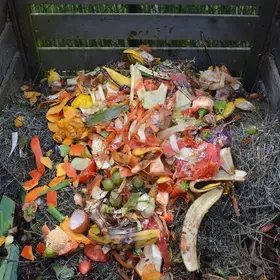By Dr. Steven Cohen, Senior Vice Dean, School of Professional Studies; Professor in the Practice of Public Affairs, School of International and Public Affairs
When measuring and managing an organization’s production of pollution, it is not enough to reduce the emissions you produce directly, you must also reduce the pollution created by your suppliers. In the language of greenhouse gas pollution, these are called Scope 3 emissions. Scope 1 emissions are those directly caused by your organization, for example, the emissions from motor vehicles owned by your organization. Scope 2 emissions are those emissions caused indirectly, for example, by the utility that supplies your electricity. Scope 3 emissions are emissions from the organizations you contract with for services or supplies. A growing area of my study of organizations has been an effort to understand the management of organizations and people who are not under direct hierarchical control. Organizational production was once typically a function of vertically integrated hierarchies, however, today, it is a function of networks of organizations, sometimes called supply chains or supply webs. Supply chain and contractor management is different and, in some ways, more difficult than internal organizational management.
Back in 2008, Bill Eimicke and I wrote The Responsible Contract Manager, which was published by Georgetown University Press and focused on government contracting. In our more recent book, Management Fundamentals, published by Columbia University Press, we devoted a chapter to outsourcing in private, nonprofit, and government organizations. In both books, we observed that most managers underestimate the difficulty, complexity, and importance of managing contractors. One management element that is difficult to extend into contracted organizations is an organization’s performance measurement system. In Management Fundamentals, we observed that:
“Organizational networks and sophisticated, resilient supply chains are already part of most organizations, and their growth in coming years is easy to project. Obstacles to contracting and extending supply chains can and will be overcome. These changes will lead to an increased demand for contract management skills…We expect to see an extension of performance management systems from contracting organizations to their vendors. [emphasis added] Ultimately, skill and experience at managing contractors will likely become part of a manager’s “toolkit” and join basic skills in accounting, finance, sustainability, human resources, marketing and information management as routine but essential elements of competent management.” (page 113)
I view the management of Scope 3 carbon emissions not as an impossible task but as a difficult but nevertheless routine element of responsible contract management. Of course, some organizations will have an easier time imposing reporting requirements on suppliers than others. And some organizations may have difficulty complying with the reporting requirements of their customers. Walmart, for example, requires its suppliers to provide data on a number of sustainability indicators, and the giant retailer’s power in the marketplace gives it the clout to command adherence to its demands. The company incentivizes sustainability management and reporting by paying compliant vendors faster than those that do not comply with sustainability requirements. Walmart is not alone in requiring sustainability measurement. Recently, Microsoft started to demand its suppliers reduce their carbon emissions. According to a report by Perry Cleveland-Peck in The Wall Street Journal:
“Microsoft will ask its main suppliers to use 100% carbon-free energy by the end of the decade, as it reported a 30% rise in emissions and acknowledged that the biggest challenge in meeting its climate goals comes from building new AI infrastructure and tackling the emissions from its supply chain. Chief Sustainability Officer Melanie Nakagawa said the company will require “select scale, high-volume suppliers to use 100% carbon-free electricity by 2030” for goods and services delivered to Microsoft. The tech heavyweight said the requirements will be rolled out at the start of the 2025 fiscal year as part of an overall update to the company’s Supplier Code of Conduct… “Right now for so many it’s just about getting them started. We have thousands upon thousands of suppliers. What we’re looking at is those of the largest volume because that’s really where the energy matters,” Nakagawa said. She added that the company is “not there yet” with regards to dropping suppliers who fail to meet the climate goal. Microsoft has an outsized influence over the tech sector due to its extensive supply chain and its dominant position within the market. Any move to force its suppliers to comply with the new directive is likely to send reverberations across the industry in the short term, but ultimately could have a significant positive impact on the sector’s efforts to decarbonize.”
The seriousness of this effort will not be known for years, but companies as large and visible as Microsoft find it difficult to avoid accountability. What is encouraging about this effort to add emission reduction to vendor management is Microsoft’s realization that they need to work with suppliers to accomplish what will surely be a complicated and difficult goal. Decarbonization will not be achieved overnight. It will take time and effort. It will require capital as well. If done correctly, it can result in reduced energy costs along with reduced emissions, since renewable energy is less expensive than fossil fuels. But the process of change takes time and transitions are rarely easy. It is also important to understand that the contracting organization’s Scope 3 emissions are also the vendor organization’s Scope 1 and 2 emissions. So, a more universal effort to decarbonize should result in emission reductions throughout the supply chain.
There are several practical problems in measuring and reporting Scope 3 emissions that were identified in an excellent December 2023 analysis by Deloitte’s Frits Klaver, Alissa Griffioen, Iris Mol, and Tim Moolhuijsen. According to the Deloitte team:
“To reduce Scope 3 emissions, they must be measured and reported, but this is difficult because the sources lie beyond a company’s operational reach. Poor data quality and availability across the supply chain is the main obstacle…Supply chain partners –especially smaller businesses – often lack good-quality primary data, or the resources to calculate and share it effectively and accurately. A further obstacle is the lack of common data-sharing infrastructure across value chains and countries. In the absence of primary data, it is a challenge to accurately evaluate and improve Scope 3 emissions… Engaging stakeholders across the value chain is essential for obtaining Scope 3 emissions data but can be challenging when partners do not measure their emissions or face difficulties improving their measurement, reporting and performance. Even for those that have data available, concerns about trust, confidentiality, intellectual property, or reputation can make them reluctant to share it. Resource constraints can limit a company’s Scope 3 emissions measurement and reporting capabilities.”
Microsoft appears to understand these difficulties and recognizes that to successfully measure Scope 3 emissions they will need to work with suppliers and initially focus their efforts on their larger suppliers since those are the vendors whose emission impact on Microsoft will be greatest. The fact that this measurement task is complex and difficult in no way justifies abandoning it.
The task of measuring Scope 3 emissions is simply a part of the overall contract or supply chain management task of extending an organization’s performance measurement system to its vendor organizations. This becomes part of the purchase agreement with the vendor. Just as an organization might require a vendor to provide an invoice in a particular format or submit it via a specified software application, so too can they require the submission of performance metrics—including greenhouse gas emissions—as part of their purchase agreement. The issue then becomes one of ensuring accuracy, presumably through an audit process.
Scope 3 reporting was a topic of widespread moaning and groaning among those commenting on the recent Security and Exchange Commission mandatory greenhouse gas reporting rule. The fact is that well-managed organizations are already requiring performance reports from their vendors. While extending that reporting to greenhouse gas emissions may be difficult, it is far from infeasible. It will also get easier with experience. Measuring an organization’s impact on its natural environment and host communities is becoming a routine part of competent and effective organizational management. Extending that measurement process into an organization’s supply chain is simply an expression of current best management practices.
Views and opinions expressed here are those of the authors, and do not necessarily reflect the official position of Columbia School of Professional Studies or Columbia University.
About the Program
The Columbia University M.S. in Sustainability Management program offered by the School of Professional Studies in partnership with the Climate School provides students cutting-edge policy and management tools they can use to help public and private organizations and governments address environmental impacts and risks, pollution control, and remediation to achieve sustainability. The program is customized for working professionals and is offered as both a full- and part-time course of study.



